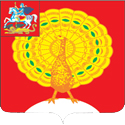USE OF BLOOM’S TAXONOMY IN THEORETICAL TRAINING OF YOUNG CHESS-PLAYERS

USE OF BLOOM’S TAXONOMY IN THEORETICAL TRAINING OF YOUNG CHESS-PLAYERS
Akimushkin R.V.
PhD student of the Department of theory and methodology of individual-game and mind sports at the Russian State University of Physical Education, Sports, Youth and Tourism (SCOLIPE), Moscow, Russia
Abstract. The paper deals with exploring theoretical information in accordance with Bloom’s Taxonomy in which educational objectives are classified into 6 levels:«Knowledge», «Understanding», «Application», «Analysis», «Synthesis» and «Assessment». The author proposes using Bloom’s Taxonomy in training of young chess players.
Keywords. Theoretical training, Bloom’s Taxonomy, assessment criteria, educational goals.
The leading role in the system of special preparation along with the analysis of games of the strongest chess players, physical and psychological training and the development of mental endurance belongs to theoretical preparation.
Basic training techniques of young chess players in youth sports schools are based on educational and training programs which were developed by V. Golenishchev and A. Kostyev [2, 3, 4, 5]. Classes include theoretical and practical parts. Theoretical lessons consist of information of studying game elemets, while practical lessons include chess games or playing standard positions, various chess competitions and quizzes.
Golenishchev’s programs are fundamental in the system of the theoretical training of young chess players. They still remain great methodological value and are successfully used in chess pedagogy. However, they lack a clear separation of cognitive processes in the study of theory. Besides, these programs do not provide the study of the beginning stage of the game, which role in modern chess has increased significantly, including children’s chess.
The paper deals with improving theoretical training for young chess players by using the taxonomy of educational objectives developed by B.S. Bloom.
The taxonomy of education was developed by a group of American scientists from the University of Chicago under the supervision of B.S. Bloom [6]. Although the taxonomy was created in 1956, it remains among the most actively used means of setting goals in various training courses, programs and individual classes [1].
We have tried to apply Bloom’s taxonomy of educational objectives to the theoretical training of young chess players.
Level of knowledge. It is the lowest and the most basic level of Bloom’s taxonomy of educational objectives. The objectives at this level are formulated in terms of memorization and reproduction (terms, names, principles, numbers, theories, etc.).
Students know (remember and reproduce) the main categories, rules, methods and principles.
For example: «Name the most popular open debuts», «List the elements of position evaluation identified by V. Steinitz».
At this stage, it is sufficient to familiarize students with relevant information so they can repeat it.
Level of understanding. The second level is characterized by the cognitive actions associated with understanding and creating new concepts. Students should be able to transform the material from one to another and to explain the theory in their own words to demonstrate the achievement of this level. The ability to summarize the information received, to convey it and to read diagrams confirms that the students have acquired all necessary skills and (the information has been captured and processed).
For example: «Describe in your own words the features of playing open debuts».
Level of application. The objective of this level is to apply acquired knowledge and skills in familiar or completely/relatively new situation. This didactic category implies the ability of students to use the studied material in pre-determined conditions and new circumstances.
The students apply the principles and theories in concrete situations, demonstrate the concrete application of the methods.
For example: «Develop a game instruction for White in the King’s gambit».
Level of analysis. For this level the objectives require that students can divide the material into separate parts so that its structure becomes obvious. Thus includes the ability to identify the relationships between the parts of the whole, understanding of general organizational principles. Students are able to reveal implicit assumptions, to see errors and flaws in the logic of reasoning, to draw some flaws in logic of reasoning, to draw a distinction between facts and consequences.
For example: «Identify the principles underlying the attack of the pawn minority».
At the fourth level elements of creative thinking are formed through analysis, abstraction and concretization characterizing high-level thinking.
Level of synthesis. This level determines the ability to combine elements in such way that a unified whole is obtained, possessing a degree of novelty. Having achieved the objectives of the level, students can successfully apply their knowledge, solve tactical tasks with various combinational motives, develop game plans in various positions.
The highest level. This is the highest, the sixth level of Bloom’s taxonomy, which implies the ability to assess the value of the available date. Students can do reasonable evaluation about any information, compliance of the final conclusions with the available source data and value of individual elements.
For example: «Compare and evaluate the effectiveness of various game plans for White in the Carlsbad pawn structure».
Bloom’s taxonomy is not just a schematic classification. Taxonomy is also an attempt to arrange various mental processes in a strict hierarchical order. In the taxonomic hierarchy each level depends on the student’s ability to work at this level and also at previous levels.
Bloom’s taxonomy allows you to create a modern chess lesson at a new didactic level.
We have developed recommendations for training young chess players in the beginning stage of the game in accordance with Bloom’s Taxonomy. Coaches have used these recommendations in sport school «Russian Bear» (Serpukhov, Moscow region) and have achieved good results.
The author considers that the new approach to conduct theoretical training with young chess players based on the taxonomy of educational objectives, which naturally combines the positive experience of the classical heritage and modern developments allow young chess players to achieve greater progress and high sport results.
Refrence:
1. Gabbasova, A.J. Intellectual development of children of primary school age in learning the game of chess. — Ulyanovsk, UlSTU, 2008. — 95 p.
2. Golenishchev, V.E. Training Program for chess players of the IV and III categories. — Moscow: «RUSSIAN CHESS HOUSE», 2015. – 64 p.
3. Golenishchev, V.E. training Program for chess players of the second category. — Moscow: «RUSSIAN CHESS HOUSE», 2016. – 304 p.
4. Golenishchev, V. E. training Program for chess players of the first category. — Moscow: «RUSSIAN CHESS HOUSE», 2016. – 248 p.
5. Kostyev, A.N. To the Teacher about chess: a teacher’s Guide. — M: Enlightenment, 1986. – 111 p.
6. Bloom, B.S. (Ed) 1956. Taxonomy of educational objectives: The classification of educational goals: Handbook I, cognitive domain. New York: Longman.
XIV Annual International Conference for Students and Young Researchers “Modern University Sport Science” 2020 г.




